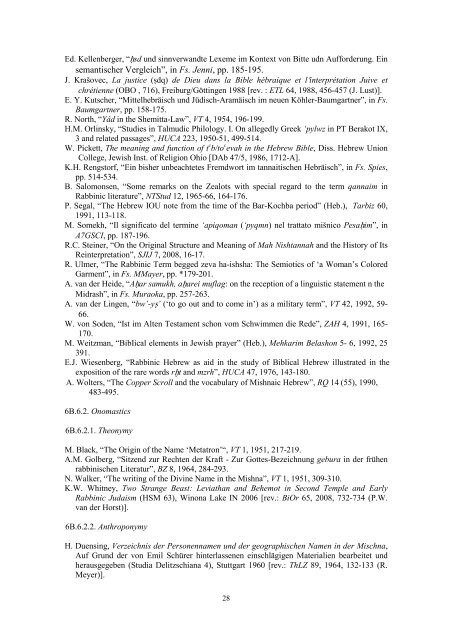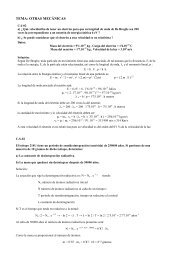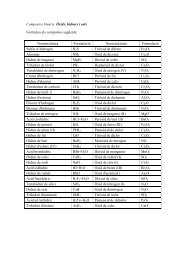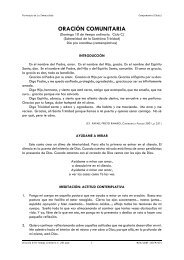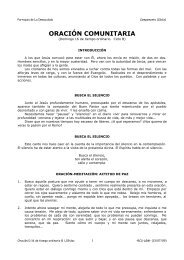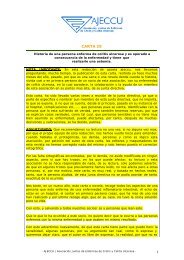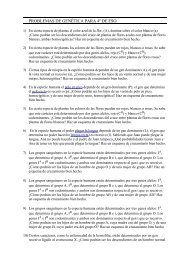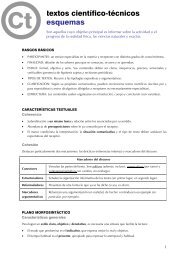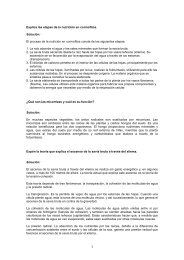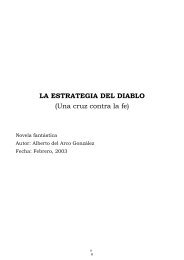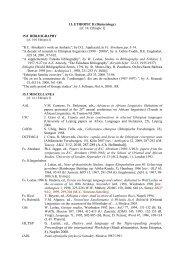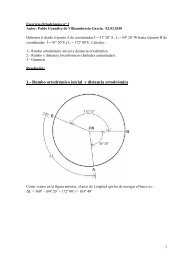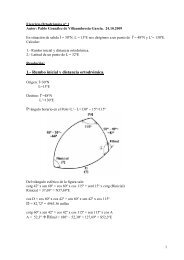BIB-SEM.6HB-dial _2010 - Telefonica.net
BIB-SEM.6HB-dial _2010 - Telefonica.net
BIB-SEM.6HB-dial _2010 - Telefonica.net
You also want an ePaper? Increase the reach of your titles
YUMPU automatically turns print PDFs into web optimized ePapers that Google loves.
Ed. Kellenberger, “úsd und sinnverwandte Lexeme im Kontext von Bitte udn Aufforderung. Ein<br />
semantischer Vergleich”, in Fs. Jenni, pp. 185-195.<br />
J. Krašovec, La justice (§dq) de Dieu dans la Bible hébraique et l=interprétation Juive et<br />
chrétienne (OBO , 716), Freiburg/Göttingen 1988 [rev. : ETL 64, 1988, 456-457 (J. Lust)].<br />
E. Y. Kutscher, “Mittelhebräisch und Jüdisch-Aramäisch im neuen Köhler-Baumgartner”, in Fs.<br />
Baumgartner, pp. 158-175.<br />
R. North, “Yâd in the Shemitta-Law”, VT 4, 1954, 196-199.<br />
H.M. Orlinsky, “Studies in Talmudic Philology. I. On allegedly Greek ‘pylwz in PT Berakot IX,<br />
3 and related passages”, HUCA 223, 1950-51, 499-514.<br />
W. Pickett, The meaning and function of t c b/to c evah in the Hebrew Bible, Diss. Hebrew Union<br />
College, Jewish Inst. of Religion Ohio [DAb 47/5, 1986, 1712-A].<br />
K.H. Rengstorf, “Ein bisher unbeachtetes Fremdwort im tannaitischen Hebräisch”, in Fs. Spies,<br />
pp. 514-534.<br />
B. Salomonsen, “Some remarks on the Zealots with special regard to the term qannaim in<br />
Rabbinic literature”, TStud 12, 1965-66, 164-176.<br />
P. Segal, “The Hebrew IOU note from the time of the Bar-Kochba period” (Heb.), Tarbiz 60,<br />
1991, 113-118.<br />
M. Somekh, “Il significato del termine ‘apiqoman (‘pyqmn) nel trattato mišnico Pesaúim”, in<br />
A7GSCI, pp. 187-196.<br />
R.C. Steiner, “On the Original Structure and Meaning of Mah ishtannah and the History of Its<br />
Reinterpretation”, SJIJ 7, 2008, 16-17.<br />
R. Ulmer, “The Rabbinic Term begged zeva ha-ishsha: The Semiotics of ‘a Woman’s Colored<br />
Garment”, in Fs. MMayer, pp. *179-201.<br />
A. van der Heide, “Aúar samukh, aúarei muflag: on the reception of a linguistic statement n the<br />
Midrash”, in Fs. Muraoka, pp. 257-263.<br />
A. van der Lingen, “bw’-y§’ (‘to go out and to come in’) as a military term”, VT 42, 1992, 59-<br />
66.<br />
W. von Soden, “Ist im Alten Testament schon vom Schwimmen die Rede”, ZAH 4, 1991, 165-<br />
170.<br />
M. Weitzman, “BibIical elements in Jewish prayer” (Heb.), Mehkarim Belashon 5- 6, 1992, 25<br />
391.<br />
E.J. Wiesenberg, “Rabbinic Hebrew as aid in the study of Biblical Hebrew illustrated in the<br />
exposition of the rare words r≠t and mzrh”, HUCA 47, 1976, 143-180.<br />
A. Wolters, “The Copper Scroll and the vocabulary of Mishnaic Hebrew”, RQ 14 (55), 1990,<br />
483-495.<br />
6B.6.2. Onomastics<br />
6B.6.2.1. Theonymy<br />
M. Black, “The Origin of the Name ‘Metatron’“, VT 1, 1951, 217-219.<br />
A.M. Golberg, “Sitzend zur Rechten der Kraft - Zur Gottes-Bezeichnung gebura in der frühen<br />
rabbinischen Literatur”, BZ 8, 1964, 284-293.<br />
N. Walker, “The writing of the Divine Name in the Mishna”, VT 1, 1951, 309-310.<br />
K.W. Whitney, Two Strange Beast: Leviathan and Behemot in Second Temple and Early<br />
Rabbinic Judaism (HSM 63), Winona Lake IN 2006 [rev.: BiOr 65, 2008, 732-734 (P.W.<br />
van der Horst)].<br />
6B.6.2.2. Anthroponymy<br />
H. Duensing, Verzeichnis der Personennamen und der geographischen amen in der Mischna,<br />
Auf Grund der von Emil Schürer hinterlassenen einschlägigen Materialien bearbeitet und<br />
herausgegeben (Studia Delitzschiana 4), Stuttgart 1960 [rev.: ThLZ 89, 1964, 132-133 (R.<br />
Meyer)].<br />
28


